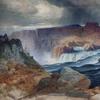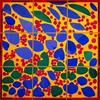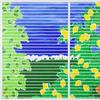National Geographic: 50 Greatest Wildlife Photographs Exhibition to Open at National Museum of Wildlife Art
- JACKSON, Wyoming
- /
- October 27, 2021

National Museum of Wildlife Art visitors will witness some of the most surprising animal behavior in the National Geographic: 50 Greatest Wildlife Photographs exhibition which is organized and traveled by the National Geographic Society. The very best wildlife pictures from the pages of National Geographic magazine have been chosen to be displayed in this exhibition. Curated by renowned nature picture editor, Kathy Moran, this exhibition is a celebratory look at wildlife with images taken by National Geographic’s most iconic photographers such as, Michael “Nick” Nichols, Steve Winter, Paul Nicklen, Beverly Joubert, David Doubilet and more. Showcasing the evolution of photography, the images convey how innovations such as camera traps, remote imaging, and underwater technology have granted photographers access to wildlife in their natural habitat. National Geographic: 50 Greatest Wildlife Photographs will remain open at the National Museum of Wildlife Art until April 24, 2022.

“There are some really spectacular photographs in 50 Greatest Wildlife Photographs that serve to complement the wildlife art that we have exhibited from our permanent collection,” says Tammi Hanawalt, Curator of Art at the National Museum of Wildlife Art. “Through these photographs visitors will see views of wildlife that they might never be able to see in nature, and they will also be offered some insight as to the progression of wildlife photography, as well as how perspectives about wildlife have changed over decades.”

For 133 years, National Geographic has utilized its storytelling expertise to connect its readers to the great outdoors. The organization has pioneered the art of wildlife photography ever since the first image to appear in National Geographic magazine of a reindeer in 1903. The start of the exhibition displays such humble beginnings of wildlife photography and details how these photographers paved the way for future generations of visual storytellers.
A distinctive element of the exhibition is that each photograph on display was taken in a natural environment. None of the images were taken in permanent captivity or through the use of baiting techniques. After viewing these spectacular photographs, visitors will be compelled to take action to protect these animals and join National Geographic in its endeavor to achieve a planet in balance.
A special curator-led sneak peek of the exhibition will happen on Friday, November 5, 2021, 11:30am–12pm. This is an exciting opportunity to preview a new exhibition prior to its public opening. Following the sneak peek, a public celebration of the exhibition opening will take place that same evening on Friday, November 5, 5–7pm.
About the National Geographic Society
The National Geographic Society is a global nonprofit organization that uses the power of science, exploration, education and storytelling to illuminate and protect the wonder of our world. Since 1888, National Geographic has pushed the boundaries of exploration, investing in bold people and transformative ideas, providing more than 15,000 grants for work across all seven continents, reaching 3 million students each year through education offerings, and engaging audiences around the globe through signature experiences, stories and content. To learn more, visit www.nationalgeographic.org











_(17100x100_c.jpg)




